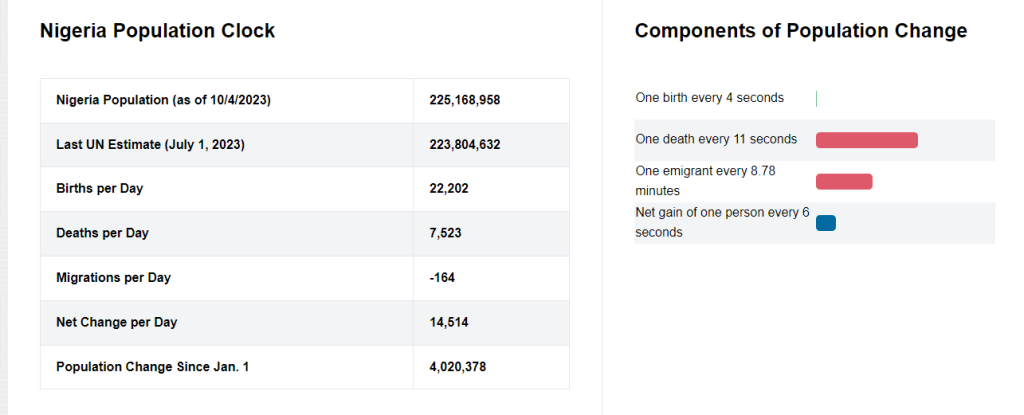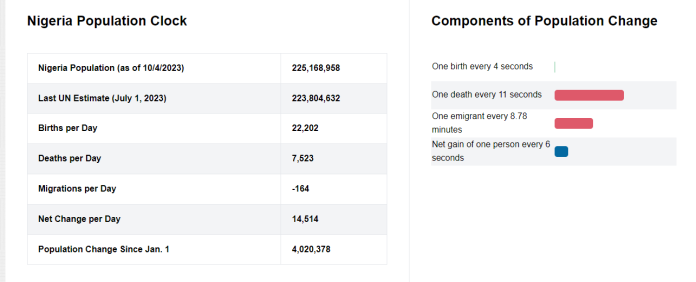Nigeria has the most people in Africa. According to the United Nations (UN), Nigeria’s total population would be at 401.31 million by the end of 2050 (year). If current trends continue, Nigeria’s population will exceed 728 million by 2100 (year).

According to the United States Census Bureau, Nigeria’s population will surpass that of the United States in 2047, when the population of Nigeria would reach 379.25 million. With those figures, Nigeria will become the world’s third most populous country.

Early marriages, high birth rates, and a lack of access to family planning are important contributors to Nigeria’s population growth. Nigeria has a birth rate of roughly 37 births per 1,000 inhabitants.
Nigeria was ranked first in the year’s ranking of African countries with the greatest rate of homelessness.
Nigeria, which has a strong population growth rate of roughly 2.6% per year, has a considerable homeless population as a result of various interconnected reasons.
The growth has had a significant impact on the country’s resources, notably housing.
Homelessness is a worldwide issue, with millions of individuals living without a safe and stable place to call home.
Nigeria’s growth rate remains higher than that of many other countries of comparable size, although it is expected to decline slightly in the following years, with the present rate of 2.62% falling to 2.04% by 2050. Nigeria’s population is expected to reach 206 million by 2020, 264 million by 2030, and 300 million by 2036.
Here is a list of the top 10 countries with the highest homelessness rates in 2023:
- Nigeria: 24,400,000
- Pakistan: 20,000,000
- Egypt: 12,000,000
- Syria: 6,568,000
- DR Congo: 5,332,000
- Bangladesh: 5,000,000
- Colombia: 4,943,000
- Afghanistan: 4,660,000
- Philippines: 4,500,000
- Yemen: 3,858,000
The rate of population growth varies substantially between countries or regions. More than half of global population growth between now and 2050 is predicted to come from just eight countries: the Democratic Republic of the Congo, Egypt, Ethiopia, India, Nigeria, Pakistan, the Philippines, and Tanzania.
Life expectancy and its impact on world population
Global life expectancy has also risen in recent years, reaching 72.8 years in 2019—nearly 9 years longer than in 1990. Global life expectancy is expected to rise further, reaching 77.2 years by 2050.
Expectations about humanity’s potential to lessen the burden of AIDS/HIV and other contagious and non-communicable diseases are significant factors influencing life expectancy data.
As global life expectancy rises, the majority of the world’s countries are seeing a significant increase in the number of citizens over the age of 65.
The proportion of people over the age of 65 in the global population is expected to climb from 10% in 2022 to 16% in 2050. This total will be about double the number of children under the age of five and equal to the number of children under the age of twelve.
This imbalance can put a significant burden on a country’s economy and infrastructure since it can result in a shortage of working-age people entering the workforce to replace those who are retiring.














